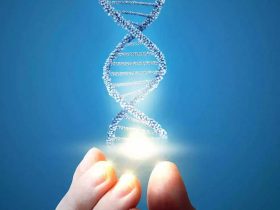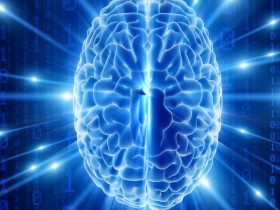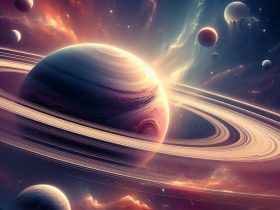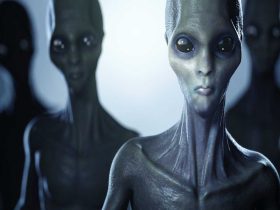How did life get started? Could life have arisen by purely “natural” means, without a designer? The universe is a big place, with trillions times trillions of stars. Newspapers report “earth-like” planets; some must have liquid water. Is life inevitable, given enough time and sunshine?
Well, maybe not. The origin of life is an unsolved riddle, and one of the greatest challenges to materialism.
The problem is that all life, even what we might think of as “simple” life, is enormously complex, and has technology far beyond anything built by human beings. All life makes copies of itself atom-by-atom. No machine built by man can do that. All life contains digital code (DNA), and 3-D printers that read the code and “print” out needed parts, by snapping together chains of basic atomic building blocks, called “amino acids.”
A 1953 experiment found that a few of these amino acids could be produced from electricity and inorganic chemical compounds. This experiment, called the Miller-Urey experiment, has led some people to believe that life did arise by chance. Many high school textbooks note the experiment. But the textbooks are outdated. Both Stanley Miller and Harold Urey admitted the mere existence of amino acids does not yield life. It’s not just that the experiment got the starting conditions wrong (which it did), or that it also produced reactive chemicals that would have destroyed life (like hydrogen cyanide and formaldehyde). It’s not just that it takes energy to “snap” together amino acids. The necessary components for life are not favored thermodynamically or kinetically.
It’s the information problem. Even if somehow you had all the right parts, all of these fantastically complex components, how on Earth (pun intended) could they ever get in the right order? How did all the pieces get put together right in three dimensional space?
All life has DNA code millions of units, millions of “letters,” long. (Those chemical units, those nucleotides, are impossibly unlikely to form by chance.) All life has copying machines and 3-D printers of astonishing accuracy and reliability. All life has machines to transfer energy. To have life, you not only have to start with all of this (and more), but the code has to be in exactly the right order so the machines can make copies of themselves. It’s a nightmare chicken-and-the-egg problem. To have life, you’ve got to start with all the machines and all the units of code, and the code has to be in the right order to specify the instructions for building the machines.
In 1964, a Yale professor calculated the odds of life arising by chance as one in a number with one hundred billion zeros. That’s at any time in any place in the history of the universe. The number of planets in the universe may be a number with 24 zeros. To go from a length so small it cannot be measured, to the distance across the known universe, you need about 60 zeros (multiply by ten about 60 times). Overcoming odds of one in a number with one hundred billion zeros is staggeringly impossible. You are more likely to win a Powerball lottery ten billion times in a row.
Life forming accidentally is like a tornado ripping through a massive junkyard and leaving behind a 747 jet, with all systems functional and ready to take off. Except it’s worse. The tornado would also have to leave behind a complete set of blueprints for building the jet and an operating manual.
Charles Darwin knew his theory couldn’t explain the origin of life. Before you can have natural selection, you must first have a means of preserving traits across generations. Inorganic matter has only chemical and physical properties; it has no way of preserving traits across generations.
You might think further effort will solve the riddle. Harvard University attempted that in 2006, when it launched an “Origins of Life Initiative,” and handed out research money. But at a conference they sponsored in 2009, the recurring theme was “we just don’t know.” Harvard has essentially abandoned the initiative.
How did life get started? Here’s a 2011 status report from Eugene Koonin, a senior investigator at the National Center for Biotechnology Information, National Library of Medicine, National Institutes of Health, and a recognized expert in the field of evolutionary and computational biology:
Despite many interesting results to its credit, when judged by the straightforward criterion of reaching (or even approaching) the ultimate goal, the origin of life field is a failure—we still do not have even a plausible coherent model, let alone a validated scenario, for the emergence of life on Earth. Certainly, this is due not to a lack of experimental and theoretical effort, but to the extraordinary intrinsic difficulty and complexity of the problem. A succession of exceedingly unlikely steps is essential for the origin of life, from the synthesis and accumulation of nucleotides to the origin of translation; through the multiplication of probabilities, these make the final outcome seem almost like a miracle.
The origin of life seems like a miracle.
There is no materialist explanation for the origin of life. Our most brilliant scientists can’t come up with a mildly plausible scenario. When decades of intense scientific effort leave us with the statement that the origin of life seems like a miracle, we are forced to consider the possibility that it really was a miracle, a supernatural event, and that life was designed.
Thanks for reading. Please share the good news of science.


















Leave a Reply